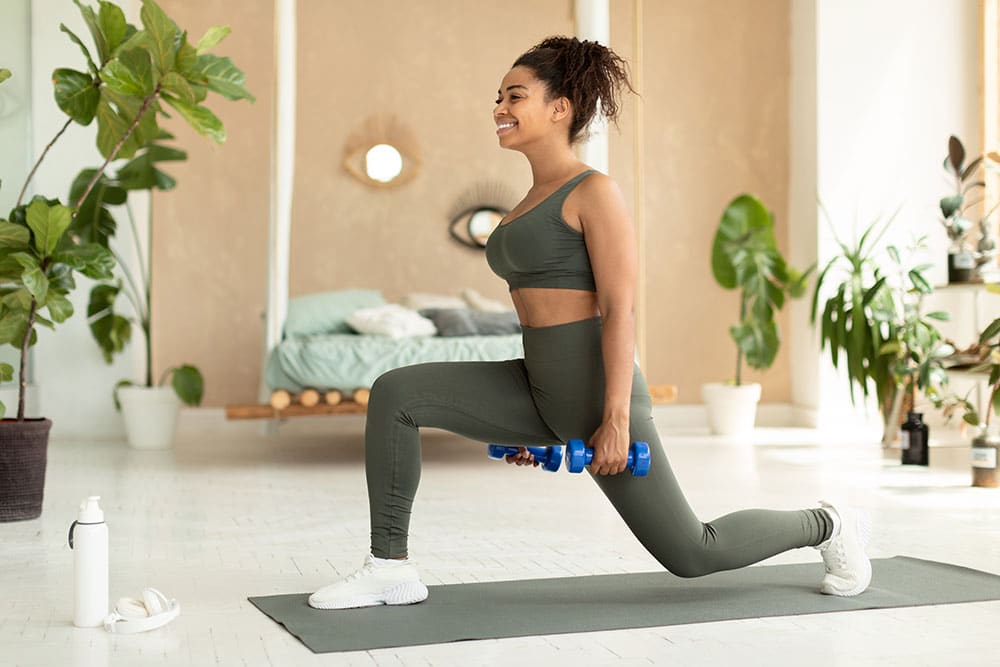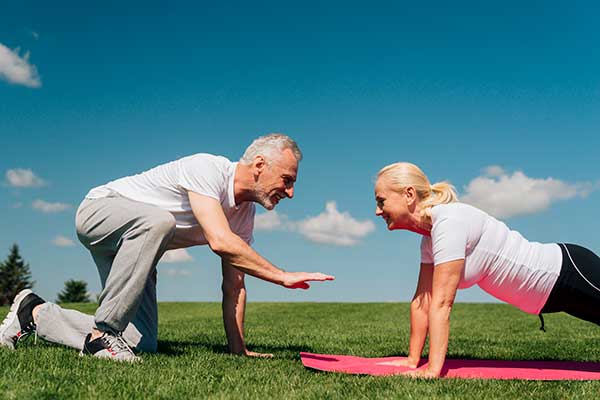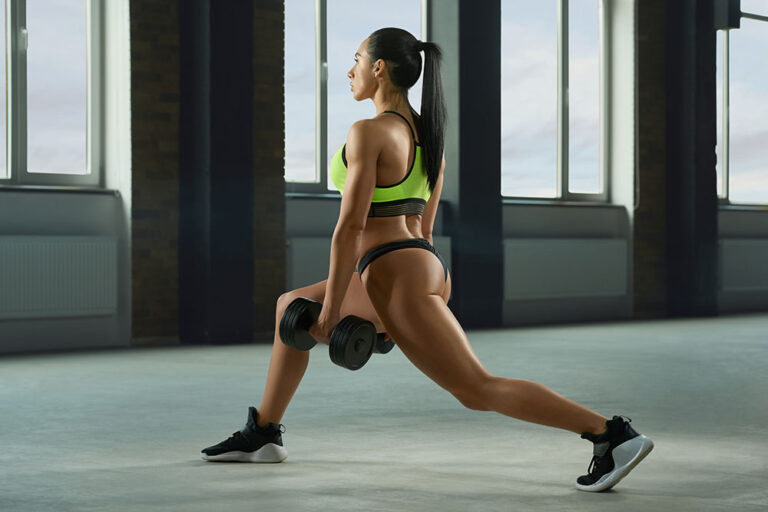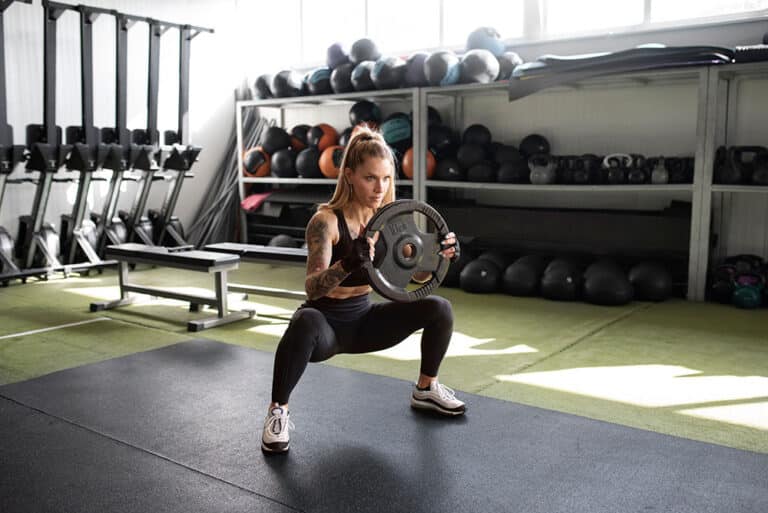Importance of Leg Exercises
Leg exercises are pivotal for overall health and fitness. They build strength, enhance endurance, and promote healthy movement. Here, we explore the benefits of strong legs and the role leg workouts play in maintaining good health.
Benefits of Strong Legs
Strong legs are essential for numerous reasons. They not only contribute to aesthetics but also play a crucial role in daily activities like walking, climbing stairs, and sitting down. Here are some key benefits:
- Improved Mobility: Strong leg muscles facilitate daily movements, making activities like walking and stair climbing more manageable.
- Enhanced Stability and Balance: Leg strength improves balance and stability, reducing the risk of falls and injuries.
- Increased Endurance: Stronger legs increase overall endurance, helping one stay active longer without fatigue.
- Boosted Metabolism: Leg exercises can help increase metabolism, aiding in weight management.
Strengthening your legs can also alleviate stress by boosting feel-good endorphins and distracting from daily worries (Mayo Clinic).
Role of Leg Workouts in Health
Leg workouts play a significant role in overall health by engaging major muscle groups such as the glutes, quads, hamstrings, and calves (Healthline). Regular leg exercises contribute to:
- Heart Health: Leg exercises often involve large muscle groups, leading to increased heart rate and cardiovascular endurance.
- Bone Density: Weight-bearing exercises like squats and lunges can help improve bone density, reducing the risk of osteoporosis.
- Lower Body Strength: Essential for functional movements, lower body strength helps in performing daily tasks with ease.
- Energy Expenditure: Leg workouts can lead to higher energy expenditure, beneficial for weight management and overall energy levels.
The Department of Health and Human Services recommends at least 150 minutes of moderate aerobic activity or 75 minutes of vigorous aerobic activity per week (Mayo Clinic).
For those looking to start leg exercises, our articles on how to do bodyweight squats, bodyweight lunge variations, and calf exercises without weights provide helpful guidance.
| Benefit | Description |
|---|---|
| Improved Mobility | Facilitates daily movements like walking and stair climbing |
| Enhanced Stability | Improves balance and reduces fall risk |
| Increased Endurance | Helps stay active longer without fatigue |
| Boosted Metabolism | Aids in weight management by increasing metabolism |
| Heart Health | Increases cardiovascular endurance |
| Bone Density | Improves bone density and reduces osteoporosis risk |
| Lower Body Strength | Essential for daily tasks like getting out of bed and moving up and down stairs (One Peloton) |
| Energy Expenditure | Leads to higher energy expenditure, beneficial for weight management and overall energy levels |
Designing a Leg Workout
Creating an effective morning leg exercise routine involves understanding the key movements, appropriate sets and reps, and workout frequency to maximize strength and health benefits.
Basic Leg Exercise Movements
Effective leg workouts should be built around basic lower body movements like squats, hip hinges (deadlifts), and lunges. These exercises target major leg muscle groups such as the glutes, quads, hamstrings, and calves. Here are some essential movements to include in your routine:
- Squats (how to do bodyweight squats)
- Hip Hinges
- Lunges (bodyweight lunge variations)
- Calf Raises (calf exercises without weights)
These exercises provide a balanced focus on the primary muscle groups and can be modified to suit different fitness levels.
Reps and Sets Guidelines
The number of repetitions (reps) and sets is crucial to designing a leg workout that maximizes muscle growth and overall fitness. Higher volume resistance training sessions are more effective for muscle growth:
| Exercise | Reps per Set | Sets per Exercise |
|---|---|---|
| Squats | 8-12 | 3-4 |
| Hip Hinges | 8-12 | 3-4 |
| Lunges | 8-12 | 3-4 |
| Calf Raises | 12-15 | 3-4 |
For beginners aiming to increase general fitness, it is recommended to choose 3–5 leg exercises per workout and complete 3 sets of 8–12 reps for each exercise. It is essential to work the muscles to fatigue but not to failure (Healthline). Adjust the reps and sets based on your fitness level and goals. Visit our bodyweight leg challenge for more exercises.
Frequency of Leg Workouts
Recent research suggests that there isn’t much difference between training major muscle groups one time per week versus three times per week to maximize muscle growth. The key factor is resistance training volume, emphasizing sets and reps over frequency (Healthline).
Recommended frequency for leg workouts:
| Fitness Level | Frequency |
|---|---|
| Beginner | 2-3 times per week |
| Intermediate | 3 times per week |
| Advanced | 3-4 times per week |
The frequency can be adjusted based on individual goals and recovery needs. For more details on leg workout scheduling, check out our guide on leg workout frequency bodyweight.
Incorporate these principles into your morning routine to build stronger, healthier legs. Explore more tips on quick leg workouts with no equipment to keep your sessions versatile and effective.
Preparing for Leg Workouts
When it comes to morning leg exercises, preparation is key to maximizing benefits and minimizing injury. Effective preparation includes a proper warmup, stretching routines, and cool down techniques.
Importance of Warmup
A proper warmup is essential before starting any leg workout. It prepares the muscles, increases blood flow, and reduces the risk of injury. According to Healthline, an effective warmup includes:
- Light Cardio: 5 minutes of activities like brisk walking, jogging in place, or jumping jacks to increase heart rate.
- Foam Rolling: Focus on the calves, quads, hamstrings, and glutes to release muscle tension.
- Dynamic Stretching: Exercises such as leg swings, walking lunges, and hip circles to enhance flexibility and range of motion.
Stretching Routines
Stretching routines are crucial both before and after the workout. Pre-workout stretching primarily focuses on dynamic movements, while post-workout stretching should be more static to aid in recovery and muscle relaxation.
Pre-Workout Dynamic Stretching
Dynamic stretches engage muscles and joints, enhancing mobility and preparing the body for exercise. Include the following dynamic stretches:
- Leg Swings: 10-15 swings per leg, forward and sideways.
- Walking Lunges: 10 lunges per leg, focusing on smooth movement and balance.
- Hip Circles: 10 circles in each direction per leg, activating the hip muscles.
Post-Workout Static Stretching
Post-workout stretching should be more static to cool down and elongate muscles. These stretches help prevent muscle stiffness and improve flexibility:
- Quad Stretch: Hold each stretch for 15-20 seconds per leg.
- Hamstring Stretch: Sit on the floor and reach for your toes, holding the position for 15-20 seconds.
- Calf Stretch: Place your toe against a wall and lean forward, holding for 15-20 seconds per leg.
Cool Down Techniques
A cool down is just as important as a warmup. It gradually brings the heart rate down and aids in muscle recovery. A proper cool down includes light cardio and static stretching:
- Light Cardio: 2-3 minutes of slow walking or gentle jogging to reduce heart rate.
- Static Stretching: Focus on key leg muscles (quads, hamstrings, calves, and glutes), holding each stretch for 15-30 seconds.
Here is a table displaying a sample preparation routine for leg workouts:
| Routine | Duration | Type |
|---|---|---|
| Light Cardio (Warmup) | 5 minutes | Brisk walking, jogging in place |
| Foam Rolling | 3 minutes total | Calves, Quads, Hamstrings, Glutes |
| Dynamic Stretching (Pre-Workout) | 6 minutes | Leg Swings, Walking Lunges, Hip Circles |
| Light Cardio (Cool Down) | 2-3 minutes | Slow walking, gentle jogging |
| Static Stretching (Post-Workout) | 6 minutes | Quad Stretch, Hamstring Stretch, Calf Stretch |
For those interested in exploring specific leg exercises and their modifications, we’ve provided helpful resources on how to do bodyweight squats and bodyweight lunge variations. Additionally, ensuring a proper warmup and cooldown routine is fundamental when incorporating any bodyweight leg challenge or other leg strengthening activities.
By adopting these preparation steps, enthusiasts can ensure a safer and more effective leg workout routine.
Leg Exercises for Beginners
Incorporating [morning leg exercises] into your routine can significantly enhance your overall strength, stamina, and health. Let’s explore essential leg exercises, modifications for various fitness levels, and methods for testing leg strength.
Essential Leg Exercises
For beginners, it is important to focus on basic lower body movements that target major leg muscle groups like the glutes, quads, hamstrings, and calves (Healthline). Below are some fundamental exercises that you can easily integrate into your routine.
| Exercise | Description |
|---|---|
| Squats | A fundamental exercise that targets the quads, glutes, and hamstrings. See [[how to do bodyweight squats]] |
| Lunges | A versatile exercise for the quads, hips, and glutes. For variations, check [[bodyweight lunge variations]] |
| Glute Bridges | Focuses on the glutes and hamstrings while engaging the core. |
| Calf Raises | Strengthens the calves. More variations available at [[calf exercises without weights]] |
| Step-Ups | Engages the quads, hamstrings, and glutes. Can be performed using a sturdy chair or bench. |
These exercises form the foundation of a well-rounded leg workout and can be performed without any equipment.
Modifications for Different Levels
It’s important to modify exercises based on your fitness level to ensure safety and effectiveness.
| Exercise | Beginner Modification | Advanced Modification |
|---|---|---|
| Squats | Perform against a wall (Wall Squats)[[wall exercises for legs]] | Progress to Pistol Squats [[how to do pistol squats]] |
| Lunges | Static lunges (less movement) | Walking or Jumping Lunges |
| Glute Bridges | Basic form | Single-Leg Glute Bridges |
| Calf Raises | Use both legs | Perform on one leg, add weight |
| Step-Ups | Lower platform | Higher ledge, add weight |
These modifications allow individuals to progress at their own pace while still gaining strength and endurance.
Testing Leg Strength
Testing your leg strength can help you track progress and adjust your routine to continue challenging your muscles (One Peloton). Here are a few simple tests:
- Bodyweight Squat Test: Perform as many squats as possible in 60 seconds.
- Single-Leg Balance Test: Stand on one leg for as long as possible without losing balance.
- Step-Up Test: Count the number of step-ups you can complete in 60 seconds.
Regularly testing your leg strength allows you to monitor improvements and make necessary adjustments to your workout.
Integrating these [morning leg exercises] into your daily routine can lead to notable enhancements in your physical health and overall fitness. For more details on effective leg workouts, check out our articles on [[quick leg workout no equipment]], [[bodyweight leg challenge]], and [[leg strengthening for runners]].
Morning Exercise and Its Benefits
Engaging in [morning leg exercises] has a multitude of benefits that extend beyond physical health, impacting both mental well-being and daily habits. Here’s a look at some key advantages.
Mental Health Benefits of Morning Exercise
Morning exercise can significantly improve mental health by acting as a stress reliever. Engaging in physical activity boosts feel-good endorphins while distracting from the stressors of daily life (Mayo Clinic). For instance, those who incorporate a regular morning workout often report feeling more accomplished and rejuvenated throughout the day. Exercise in the morning can also elevate mood and promote mental clarity, balancing neurotransmitters like serotonin and dopamine.
Impact on Metabolism
Performing leg workouts in the morning can have a positive impact on metabolism. Engaging in physical activity early in the day kick-starts the metabolic processes, leading to more efficient calorie burning throughout the day. Morning exercise also improves hormonal balance and sleep quality, both of which are factors in weight management (Piedmont Healthcare).
| Benefit | Explanation |
|---|---|
| Increased Metabolism | Morning exercise kick-starts the metabolic process for the day. |
| Hormonal Balance | Helps stabilize hormones that regulate appetite and metabolism. |
| Improved Sleep | Morning workouts lead to better sleep quality, aiding in overall weight management. |
Establishing Healthy Habits
Starting the day with a leg workout can set the tone for healthier choices throughout the day. Exercising in the morning often leads to increased mindfulness regarding diet and lifestyle choices (Piedmont Healthcare). By establishing a morning routine, individuals are more likely to stick to their fitness goals due to fewer distractions and obstacles (Piedmont Healthcare).
Internalizing a routine of morning leg exercises can help build long-term habits that contribute to overall well-being. For those interested in incorporating a quick, effective workout, our guide on quick leg workout no equipment offers a practical starting point.
Using these morning routines effectively can contribute to a well-rounded fitness journey. Whether it’s through mastering how to do bodyweight squats or exploring calf exercises without weights, morning workouts can be a cornerstone of a balanced fitness regimen.
Additional Tips for Leg Health
To maintain and enhance leg health, it’s essential to incorporate a holistic approach involving stretching, balance exercises, and consultation with professionals when needed.
Importance of Stretching
Stretching is vital for increasing flexibility and improving joint range of motion. This enhancement helps individuals move more freely and engage in daily activities with greater ease. The flexibility gained from stretching can also offer a protective effect against injuries (Mayo Clinic).
For those interested in specific stretching techniques, here’s a simple stretching routine:
- Hamstring Stretch: 30 seconds per leg
- Quadriceps Stretch: 30 seconds per leg
- Calf Stretch: 30 seconds per leg
- Hip Flexor Stretch: 30 seconds per leg
For more targeted exercises, check out our articles on calf exercises without weights and leg exercises for bad knees.
Balance Exercises
Balance exercises can aid in preventing and reducing the risk of falls and related injuries (Mayo Clinic). These exercises are particularly important for older adults and individuals recovering from injuries. Common balance exercises include:
- Standing on One Foot: Hold for 30 seconds on each foot
- Heel-to-Toe Walk: Walk forward placing heel of one foot directly in front of toes of other foot, repeat 20 times
- Balance Board Exercises: 5 minutes of balancing
For those looking to enhance their balance routines, try incorporating wall exercises for legs and plyometric exercises for legs.
Consulting Professionals
Individuals with health conditions or injuries should always consult with a healthcare professional or physical therapist before starting a new exercise regimen. These professionals can help determine the appropriate stretches and exercises tailored to specific needs and circumstances (Mayo Clinic). Consulting a professional ensures that the exercise routine is safe and effective.
For those who travel frequently or have a busy schedule, consider exploring our articles on leg exercises while traveling and quick leg workout no equipment to maintain leg health on the go.
In summary, maintaining leg health involves a combination of stretching, balance exercises, and seeking professional advice when necessary. By doing so, individuals can ensure strong, flexible, and resilient legs.
- About the Author
- Latest Posts
Johnnie D. Jackow Sr., the founder and CEO of Total Body Fitness, Worldwide, has a long-standing career in the fitness industry. He began as a certified personal trainer in the mid-90s and soon after authored his first weight loss book in 1998. This led to the launch of Total Body Fitness, Nationwide in the USA at the same time. Johnnie gained recognition as the fitness guru of his time, running infomercials on local TV late at night in Houston, Texas. Over the years, he has helped more than 40,000 individuals from all over the world achieve their health and fitness goals. With over 60,000 hours of documented training in integrative functional medicine, he completed his PhD in human physiology in 2010. His primary objective is to assist people in reaching their health and fitness goals through alternative approaches rather than relying solely on conventional medicine and pharmaceutical drugs. Today, with almost three decades of experience under his belt, Johnnie continues to be a leader in health and fitness.








